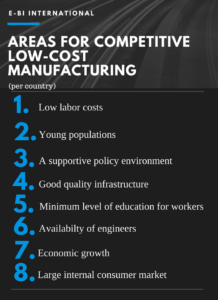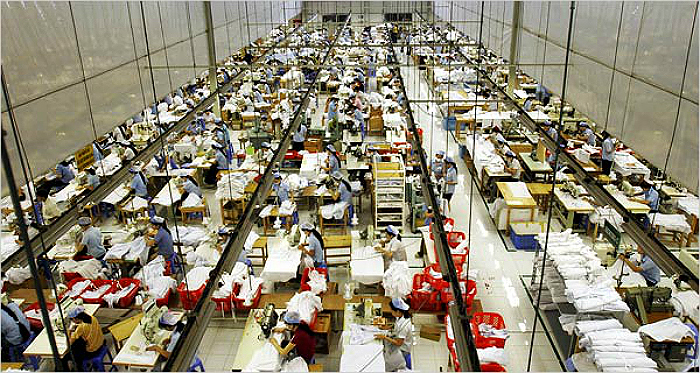The short answer is not yet. But it does have potential to get there in the future.
China’s economy is changing. It has been for a while. While that may shuffle the cards in the country’s manufacturing sector a bit, it also opens up opportunities for countries like Vietnam to move into a position of being a low-cost manufacturing hub.
Manufacturing in Vietnam
This is why E-BI has recently begun to expand operations into Vietnam. Capabilities and confidence in Vietnam’s manufacturing sector are growing and many companies are already starting or moving their manufacturing operations to the country. However, manufacturing as a workhorse in Vietnam is still young and while there are many positives to Vietnam’s manufacturing sector that will likely continue to grow, for now China still holds a significant competitive advantage.
 For a country to be competitive in low-cost manufacturing, there are a few economic areas that are generally needed: low labor costs, young populations, a supportive policy environment, good quality infrastructure, minimum level of education for all workers, availability of engineers, economic growth, and a large internal consumer market. In many of these areas, Vietnam happens to fit the bill well. While the country’s infrastructure is not yet as strong as China’s, it is still more stable than some other low-cost manufacturing leader candidates like Indonesia or India. Not to mention Vietnam has a very stable political environment. Some Chinese companies are moving manufacturing to Vietnam because of this. Licensing and operating have become much simpler than in China due to the Vietnamese government welcoming most sectors and market entry.
For a country to be competitive in low-cost manufacturing, there are a few economic areas that are generally needed: low labor costs, young populations, a supportive policy environment, good quality infrastructure, minimum level of education for all workers, availability of engineers, economic growth, and a large internal consumer market. In many of these areas, Vietnam happens to fit the bill well. While the country’s infrastructure is not yet as strong as China’s, it is still more stable than some other low-cost manufacturing leader candidates like Indonesia or India. Not to mention Vietnam has a very stable political environment. Some Chinese companies are moving manufacturing to Vietnam because of this. Licensing and operating have become much simpler than in China due to the Vietnamese government welcoming most sectors and market entry.Vietnam vs China
Yes there are some situations where it makes sense to manufacture in Vietnam over China at this moment, but Vietnam is still years behind China. The country has a lot of potential for the future, but it is not for everyone just yet. Currently, Vietnam is better suited for larger companies who have more capability to overcome challenges the country still holds and capitalize on lower labor costs. The manufacturing industry here is fragmented, making it more difficult to navigate and find suitable suppliers and workers with the necessary skill sets. The trail has been blazed in China over the years making the path much clearer there. China’s strong infrastructure, that includes well paved roads and some of the world’s busiest shipping ports, make it easy to find a handful of options for just about anything you need and not too far away from where you need them.
During China’s rapid economic growth a handful of decades ago, the country experienced a job boom. Even though there is a lot of potential for growth in other areas in Vietnam, it may not experience the same increase in jobs due to the rise of robots and automation. Times are different, but that won’t necessarily make it a less viable option for manufacturing though.
As China’s economy slows and it begins to shift more of its focus to medium and high-tech manufacturing, Vietnam is overall in a great position to secure its already proven capability in low-cost, labor intensive commodity type products like apparel, toys, textiles, shoes, and basic consumer electronics. For us and our customers, that means we will eventually have even more options and opportunities to keep our products thriving.

